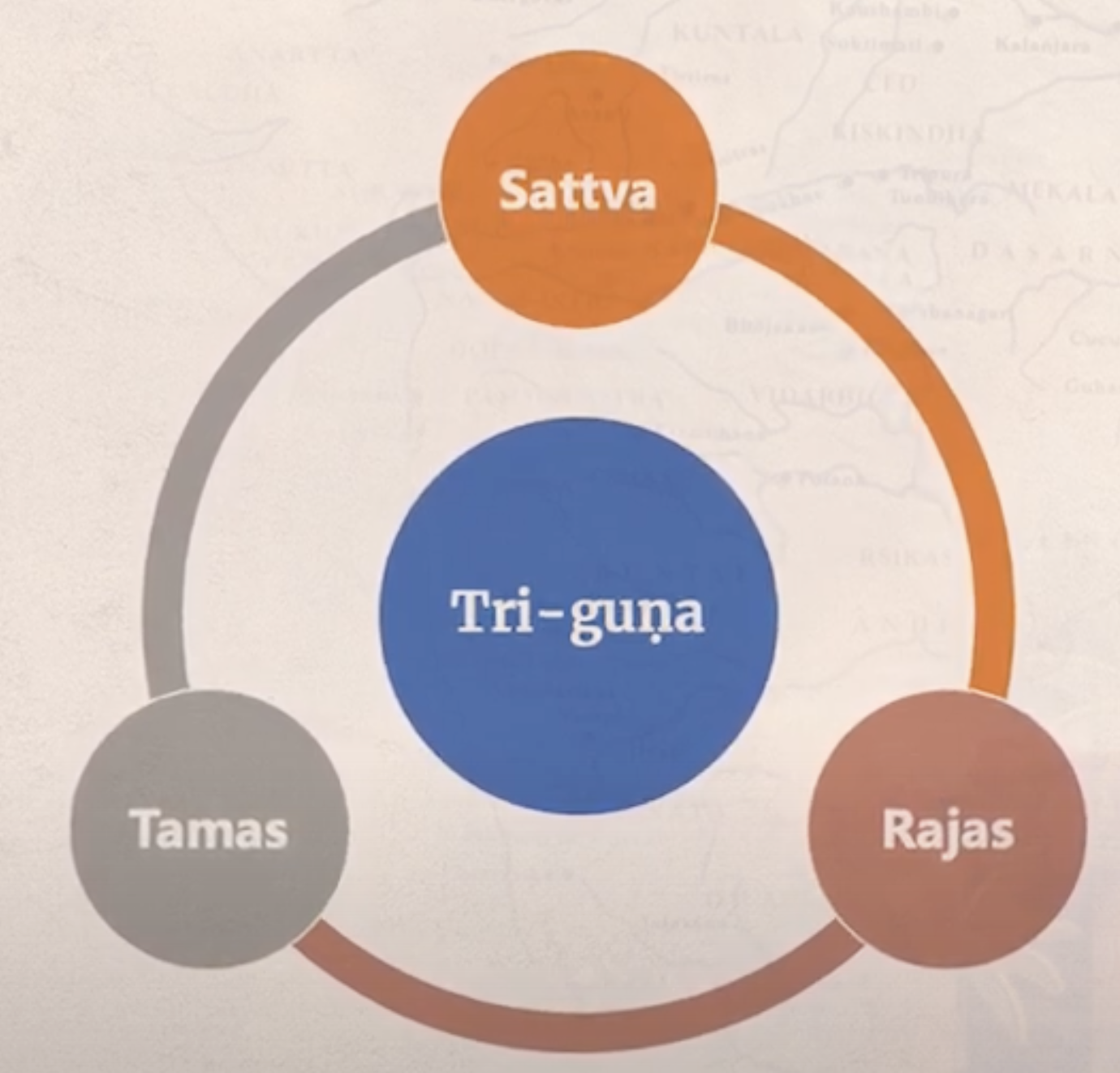The Triguna System and a Holistic Picture of the Individual
Introduction
Here we explore the Triguna system in Indian psychology and how it provides a holistic picture of the individual.
Understanding the Triguna System
The Triguna system, developed by the Sankhya tradition, consists of three gunas (qualities): sattva, rajas, and tamas. These gunas are present in every individual in varying proportions and influence an individual's personality, behavior, and overall well-being.
- Sattva: Purity, light, and harmony. Individuals with a predominance of Sattva tend to be calm, peaceful, and wise.
- Rajas: Activity, passion, and restlessness. Individuals with a predominance of Rajas tend to be energetic, ambitious, and driven.
- Tamas: Inertia, darkness, and ignorance. Individuals with a predominance of Tamas tend to be lazy, dull, and unmotivated.
A Holistic Picture of the Individual
The Triguna system provides a holistic picture of the individual by explaining the diversity in human behavior while reconciling the metaphysical truth that all individuals share the same core nature (sat, chit, and Ananda).
- Diversity: The varying proportions of Sattva, Rajas, and Tamas in individuals account for the diversity in human behavior.
- Shared Core Nature: Despite the diversity, the Triguna system acknowledges that all individuals share the same core nature, which is pure, conscious, and blissful.
Application in Psychology
The Triguna system can be used in psychology to explain varied human behavior while recognizing the shared core nature of all individuals.
- Understanding Behavior: The gunas influence an individual's thoughts, emotions, and actions. By understanding the gunas, we can gain a deeper understanding of human behavior.
- Transformation: The Triguna system suggests that individuals can transform themselves by increasing Sattva and reducing Rajas and Tamas. This transformation can lead to greater self-awareness, emotional regulation, and overall well-being.
Conclusion
The Triguna system offers a holistic framework for understanding the individual, explaining the diversity in human behavior while recognizing the shared core nature of all individuals. By understanding the gunas, we can gain a deeper understanding of ourselves and others, and work towards transforming ourselves to achieve greater well-being.

